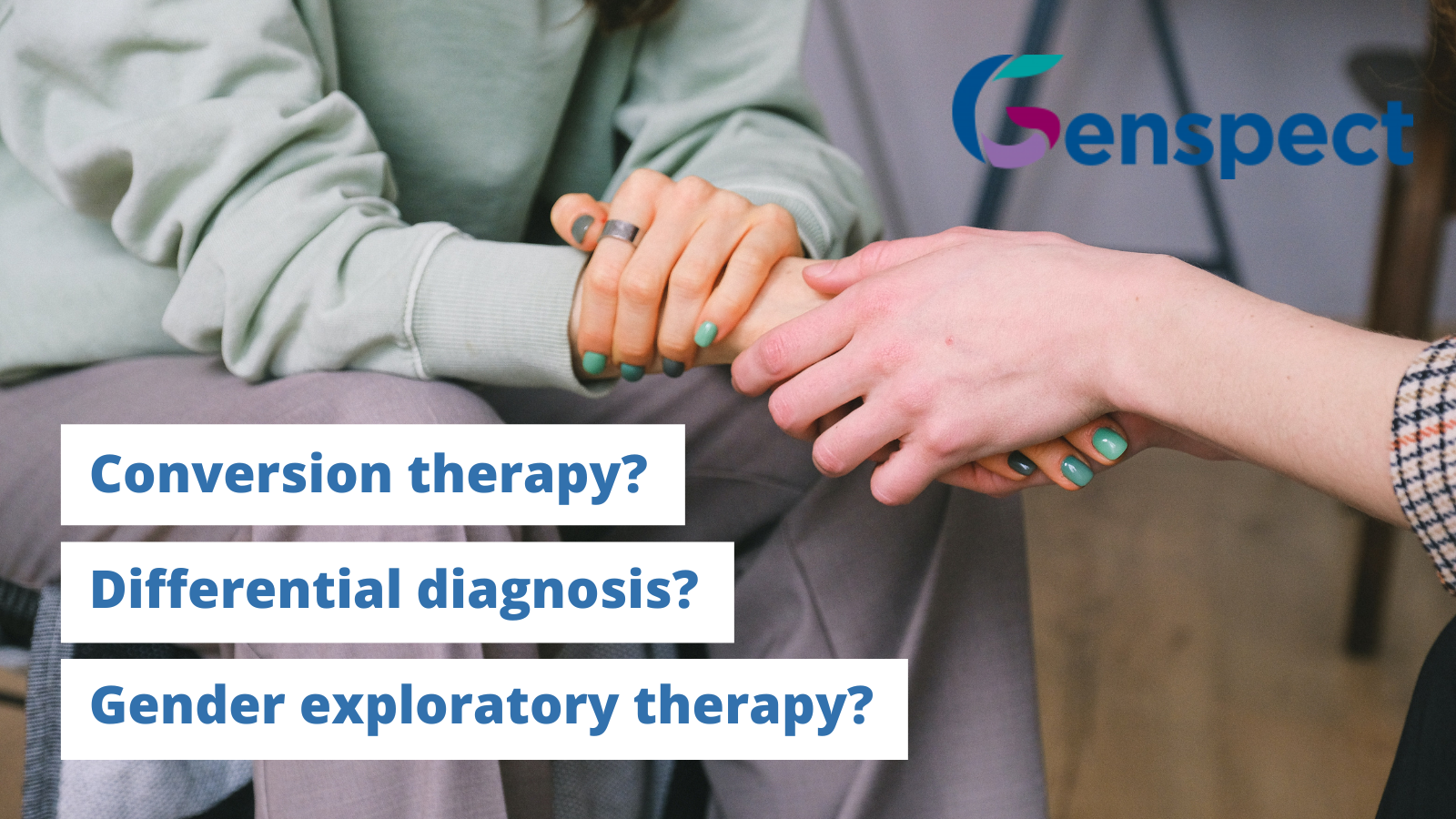What is conversion therapy?

Stella O’Malley of Genspect explains…

“Gay conversion therapy” is the term given to attempts to change a person’s sexual orientation from gay to straight. This includes demeaning and painful practices such as electric shocks, forced watching of pornography and, in extreme cases, “corrective rape”. Such abhorrent practices are now no longer practised by members of any reputable psychotherapy body, and when they involve physical acts they are criminal assault.
More recently, the term “trans conversion therapy” has come into use. By analogy with gay conversion therapy, this would mean a therapist attempting to get a person who identifies as trans to stop doing so. Since a therapist who had an agenda or planned outcome for a client would be infringing on that individual’s freedom, such an approach would be unethical.
Sometimes “differential diagnosis” can come into play: this is the process whereby a clinician investigates in order to distinguish between several possible underlying conditions. In therapy, for instance, it can be difficult to know whether a young person is suffering a dissociative reaction to sexual trauma, manifesting in self-loathing, an aversion to sex or discomfort with secondary sex characteristics, such as facial hair or breasts. These feelings may then be interpreted as a trans self-identification.
It is not the role of a therapist to carry out a differential diagnosis as such, but rather to join an individual in an exploration of their inner self. This thoughtful reflection is intrinsic to the therapeutic process, but is currently in danger of being reframed as “trans conversion therapy”.
An extra complication is that medical transition, which involves cross-sex hormones and surgeries, imposes a heavy burden on the body and may be undertaken with unrealistic expectations. This makes trans identification quite different from other sorts of identification – such as coming out as gay – which do not involve any physical steps. These major medical choices require careful consideration in advance, not least to reduce the chance of regret. Any ethical therapist will invite clients to think through such potential difficulties.
What happens in gender exploratory therapy?
“Gender exploratory therapy” is an approach that seeks to explore the client’s inner world before they embark on medical transition, in the belief that it is more beneficial to have reflected upon these issues before taking physical steps.
Therapists often begin by establishing a therapeutic alliance with the client through the use of empathy and offering a deeper understanding. If it feels appropriate, they might explore what gender roles mean for the client. For example, the client might associate being male with being strong and powerful, or being female with being gentle and submissive. Therapists might also explore how different pronouns, names, clothes and hairstyles make a client feel, in order to help them reach a more in-depth understanding of the part gender roles play in their inner world.
Sexuality might also be discussed, if relevant. Some people who have endured homophobic abuse might seek to become the opposite sex instead of accepting their orientation. Others might suffer from internalised homophobia and simply not want to be gay, lesbian or bisexual.
The principle of informed consent may lead therapists to discuss the impact of medical transition on the body, such as weakened bones, cardiovascular complications, cognitive decline, infertility and difficulties in sexual functioning. However, this might not be appropriate; for example with young children or neuro-diverse people, who might not be able to comprehend the issues.
The central aim of gender exploratory therapy is to bring about a deeper understanding of the person’s sense of self. As it is non-invasive, we believe it has a valuable role to play for anybody exploring their gender identity.
Comments from therapists
These therapists are from Canada and the state of California, where bans on “trans conversion therapy” have already been passed.
“In California, where I’m licensed to practise as a clinical psychologist, law prohibits me from engaging ‘in sexual orientation change efforts with a patient under 18,’ which includes alternative ‘gender expressions’. For this reason, I must turn away the many distraught parents who reach out for help with their gender nonconforming, autism spectrum, or gay and lesbian children who have recently become trans-identified. To do otherwise would expose me to potential malpractice lawsuits and challenges to my licensure, a vulnerability which trans-rights activists do not hesitate to exploit in order to intimidate those who question the affirmative-care model.”
Joe Burgo, psychotherapist, California, USA http://www.josephburgo.com/
“Canada’s federal conversion therapy law came into effect December 8th, 2021. The wording of the legislation is very vague and makes no mention of gender dysphoria. It defines conversion therapy as any ‘practice, treatment or service designed to…change a person’s gender identity to cisgender [’cis’ means ‘not trans’]; change a person’s gender expression so that it conforms to the sex assigned to the person at birth; repress or reduce non-heterosexual attraction or sexual behaviour; repress a person’s non-cisgender gender identity; or repress or reduce a person’s gender expression that does not conform to the sex assigned to the person at birth’.
Though it does contain an exemption clause protecting the ‘exploration or development of an integrated personal identity’, it remains unclear what talk-therapy options are permissible for clients with one of several types of gender dysphoria.
I myself am a trans man, as well as a mental-health clinician providing counselling services to adults. I frequently receive requests from parents of gender-questioning youth, and some trans people themselves, wanting support and guidance.
It’s very unclear to me what evidence-based education about gender dysphoria I’m permitted to provide to clients, and I’m concerned that even an exploration of a person’s identity development and the nature of their gender dysphoria could be misconstrued as conversion efforts. Many clients presenting as trans have acquired misinformation about gender dysphoria, and develop identities based on that misinformation. In such cases, correcting the misinformation could lead to a complaint by a client that conversion efforts to change their identity have occurred.
As a result, I have chosen to not do any clinical work directly related to gender.”
Aaron Kimberly, transman and mental-health nurse, Canada https://genspect.org/team/
Further reading
Sasha Ayad: How do I work with gender questioning teens?
Sasha Ayad: A counsellor explains how conversion-therapy bans can cause harm
Podcast: Gender: A Wider Lens, episodes 24 to 28
Book: Gender Dysphoria: A Therapeutic Model for Working with Children, Adolescents and Young Adults by Susan Evans and Marcus Evans
